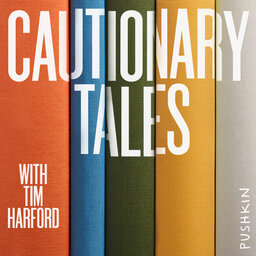Flying Too High: AI and Air France Flight 447
Panic has erupted in the cockpit of Air France Flight 447. The pilots are convinced they’ve lost control of the plane. It’s lurching violently. Then, it begins plummeting from the sky at breakneck speed, careening towards catastrophe. The pilots are sure they’re done-for.
Only, they haven’t lost control of the aircraft at all: one simple manoeuvre could avoid disaster…
In the age of artificial intelligence, we often compare humans and computers, asking ourselves which is “better”. But is this even the right question? The case of Air France Flight 447 suggests it isn't - and that the consequences of asking the wrong question are disastrous.
For a full list of sources, see the show notes at timharford.com.
 Cautionary Tales with Tim Harford
Cautionary Tales with Tim Harford


